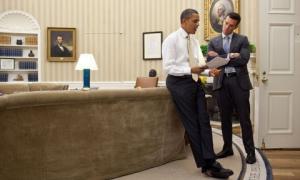Media Coaching: As media proliferate, so do required media skills
October 31, 2008
One skill many executive communicators lack is the ability to train the leaders they support in in dealing with the media. That’s why we talked to Joyce Newman and TJ Walker.
Newman has coached everybody from Mickey Mantle to Fabio and Walker has been training top executives in media relations for 25 years.
We asked them for media training tips for senior executives, many of whom have even less experience with the media— but just as much at stake during every interview.
• First, know what you don’t know about modern media. The media landscape has changed so much that executives (and executive communicators) who were savvy a decade ago might be nearly clueless now.
Remember when the sum of all your fears was a once-in-a-career confrontation with Mike Wallace?
There are so many TV outlets now, in such hot, 24-hour-a-day competition for guests who hold viewers, that one clumsy interview performance by your senior executive will hurt your chances to get that executive interviewed on TV ever again, Newman says. You also have to contend with blogs, which Newman calls “today’s version of the poison pen letter,” and unforeseen pitfalls, like the online chat after the TV show where Newman’s journalist client was made to look like a fool by a semi-literate person typing her answers.
“And don’t do Skype interviews,” Newman concludes her Modern Media lecture. “You won’t put your best foot forward.”
• The media proliferate, but your spokespeople shouldn’t. “You have to decide who’s going to be on the front lines,” Newman says. Is the CEO best positioned and best qualified to talk to the media, or is it the CFO or the COO? Whichever one or two or three execs you choose, she says, “those are the ones you should invest in,” in terms of in-depth, ongoing media training.
• Know exactly which media skills your execs need. Walker says there are four essential skill sets everyone needs: how to look your best and sound your best, how to get your own messages across in three memorable points, how to answer questions in a way that bridges back to your messages and how to deliver in compelling sound bites. Do all that, Walker says, and you’ve turned a network interview into the equivalent of a free “30-second commercial.” But how?
• The single most important media training technique: Do practice interviews, on video. Faced with 20 minutes to prepare for an interview, here’s what Walker would do: He’d spend five minutes identifying the top three messages the executive wants to get across, and then three minutes drafting some sound bites that express those messages in a memorable way. The next five minutes, he’d spend doing a sample interview with the executive—and the five minutes after that, watching the interview, so the exec can see objectively where he or she succeeded and failed. Having done the interview once and then watched it once, Walker says, the interviewee will essentially experience the live interview as a “third draft.”
He and Newman—and every other media trainer and speaking coach we’ve ever spoken with—can’t stress enough the importance of video, which has become so much easier to record and replay, through cheap digital cameras like the $120 Flip Video. “Any communications executive who lets an executive do an interview” without having run through at least one mock interview and shown the exec the results on tape, Walker says, “is guilty of malpractice and should be fined and disbarred.”
(How’s that for a sound bite?)


